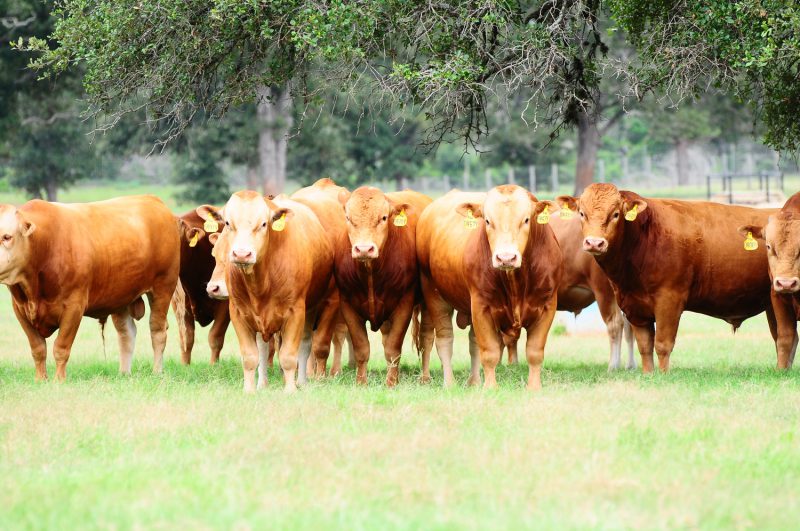
Akashi Bulls Source: American Akaushi Assocation
The Akaushi breed of cattle were first brought to the United States in 1994 from Japan. They are part of the overall group of cattle called Wagyu that originated on the Japanese island of Kyushu. The original descendants of Akaushi cattle now are located at the HeartBrand Cattle in Harwood, Texas. U.S cattle producers were interested in Akaushi cattle due to the carcass quality, maternal longevity, attractive body structure, fertility, calving ease and growth rates.
Crossbreeding Akaushi bulls with European type Bos Taurus cattle usually results in birth weights of 65-70 lbs. and finished weights in feedlots of 1200-1400 lbs. Adding 60 or more days to normal feeding period for traditional cattle in feedlots increases significantly the percentage of prime and choice cuts. Also, the meat has been shown to have a higher rate of monounsaturated fats to saturated fats along with more oleic acid. Results may vary of course based on type of feed fed, crossbred cows used in breeding program, and your overall cattle management program. Crossing Akaushi bulls with angus-type cattle have shown good results locally here in the Panhandle of Florida.
There are a number of branded beef programs in the U.S that offer premiums for different types of cattle, if you follow the specific protocols for each program. One example is the HeartBrand Beef Buyback program that offers a premium of 20¢ per pound over the 5-day CattleFax average for finished cattle that have been DNA verified sired by a full-blood Akaushi bull. It cost $20 per head for DNA verification, but HeartBrand will reimburse this cost, if they buy your cattle. They will also buy truckloads of yearlings at a negotiated price that is usually higher than local prices offered. Another option in the Southeast is FPL Foods, Augusta Georgia that also pays premiums for Akaushi sired calves.
If you are a small producer, Akaushi crossbred calves could enhance the value of freezer beef sold to local consumers. Providing a locally grown source of beef with a high percentage of prime or choice beef would be a great selling point. You would have to coordinate this with one of the local USDA-Inspected Livestock Slaughter Facilities.
–
For more information on the Akaushi breed, use the following links:
American Akaushi Association
HeartBrand Cattle
Akaushi Branded Beef Line Boasts Consistency, Taste (Beef Magazine)
American Akaushi Association (American Rancher TV Episode)
Akaushi Cattle in Walton County (Short Video)
- What are the Benefits of Freezer Beef? - August 27, 2021
- Fire Management in a Silvopasture System - March 19, 2021
- Game Cameras for Wildlife Monitoring - October 2, 2020
